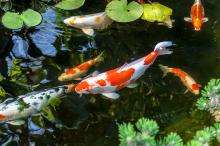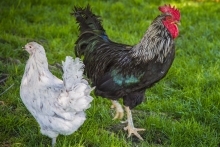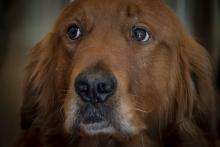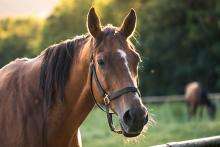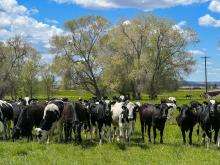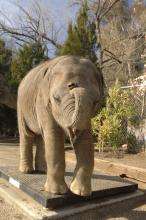Bringing Live Animals and Germplasm into the United States From Another Country (Import)
APHIS regulates the import of specific live animals and germplasm (semen, oocytes, embryos, and cloning tissue) into the United States to prevent the spread of animal diseases. These regulations apply to many species of animals, but not all. Read on to learn how to bring live animals and their germplasm into the United States and the species of animals APHIS regulates.
If you're looking for information about traveling with a pet, visit Pet Travel.
Note: For import purposes, livestock (including cows, goats, potbellied pigs, and other species) and poultry (including chickens) are not considered pets. Refer to the live animal requirements below to bring any livestock or poultry into the United States.
Shipments From Another Country Moving Through the United States to a Third Country (Import Transits)
U.S. import transits are foreign-origin shipments that move through one or more U.S. ports on their way to a third-country destination.
Notice Regarding APHIS Live Animal Import and Third-Country Import Transit Permits
- Any regulated live animals and their germplasm transiting the United States must be routed directly with no stops except those designated on the import permit.
- All third-country import transit shipments require a written contingency plan. You must submit this plan with the permit application (VS 17-129) via APHIS eFile system or to laipermits@usda.gov. The importer is also responsible for submitting the contingency plan to the port of entry with the service request.
Import and Transit Requirements by Species for Live Animals and Germplasm
If the animal species or commodity you want to import is not listed below, it may not fall under APHIS Veterinary Services (VS) regulations, and you may not need a VS permit. For example, canine semen imported for breeding purposes does not need a VS permit. To learn more, visit Importing Nonregulated Germplasm for Breeding Purposes.
However, you may still need a permit from another Federal agency like the U.S. Fish and Wildlife Service, the U.S. Food and Drug Administration, or the Centers for Disease Control and Prevention.
Need Help?
Live Animal Import Permit Team
Contact APHIS' Live Animal Import Permit team if you have questions before you apply for a permit.
For questions about import permits or permit applications:
Live Animal Import Permit Team
Email: laipermits@usda.gov
Phone: 301-851-3300
APHIS Port Services
For questions about import inspections at a port of entry, quarantine of animals arriving from a foreign country, or requesting approval as a private animal import quarantine facility, contact APHIS Port Services.
Live Animal Import and Export
Contact APHIS' Live Animal Import and Export team for questions about current trade restrictions, or other questions not related to permits.
For general questions related to the import of a live animal:
Live Animal Import and Export
Email: laie@usda.gov
Phone: 301-851-3300


